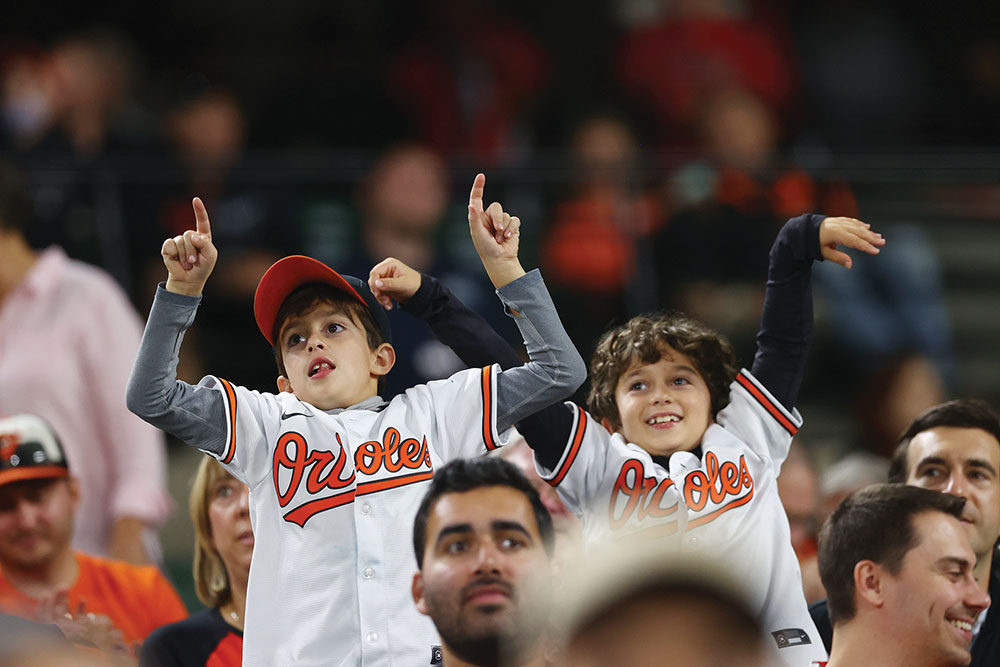With the tragic prevalence of opioid addiction in the United States, we all need to pay attention to the ways that children’s pain is addressed in both acute and chronic situations. Children feel and express pain differently than adults, both parents and doctors agree. At the same time, pediatric pain management is a complex topic for doctors and often a baffling one for parents. Some parents, fearful of their child’s suffering, want them to receive narcotics to numb the pain. Others find the possibility of addiction even more frightening and don’t want their child prescribed any opioid narcotics, regardless of pain levels.
Dr. Joshua Abzug is director of pediatric orthopedics at University of Maryland Children’s Hospital and associate professor of orthopedics and pediatrics at University of Maryland School of Medicine. Abzug recently co-authored a review examining the state of opioid use in pediatric orthopedics. Surgeons in this field are frequently top opioid prescribers. Fractures and sports injuries are common among children and can cause severe pain.
Dr. Irfan Suleman is medical director of the Pediatric Pain Rehabilitation Clinic at Kennedy Krieger Institute, where pediatric health professionals now offer a narcotic-free approach for children and teens with chronic pain. Their interdisciplinary rehabilitation program offers non-narcotic medications, physical therapy, occupational therapy, behavioral therapy, image-guided interventional procedures and intensive rehabilitation programs.
 Acute pain and chronic pain warrant distinctive approaches, but the bottom line is that parents want to protect their children, Suleman and Abzug agree. They answered some questions about the topic for Baltimore’s Child.
Acute pain and chronic pain warrant distinctive approaches, but the bottom line is that parents want to protect their children, Suleman and Abzug agree. They answered some questions about the topic for Baltimore’s Child.
Q. Are opioids prescribed more or less frequently in pediatrics today?
Suleman: Unfortunately, narcotics are still used nationwide. Narcotics are OK to use for acute pain after an injury, but we feel narcotics have no role in chronic pain. After the healing process is done, if a patient still has pain, then we are dealing with chronic pain signals, which need to be turned off.
Q. Does the use of opioids in pediatrics lead to opioid addiction in the future?
Suleman: Yes, the long-term use of narcotics in children and adults can lead to addiction.
Abzug: Unfortunately, opioids are much more prevalent than other illicit drugs, and can be a gateway drug to pursuing other illegal narcotics.
Q. How is the approach to pain management different for children than for adults?
Suleman: Unlike adults, children do not have pain caused by degenerative changes. Pain in most children is due to traumatic injuries that occur, for example, during sports activities. Chronic pain from these injuries is reversible if it’s treated early. Multimodal and interdisciplinary approaches are the best ways to treat pediatric chronic pain.
Q. Is a child’s pain tolerance higher than that of an adult’s?
Abzug: I think with children in particular, they don’t complain as much as adults, and that’s really what we’re seeing. They don’t know to complain, and therefore they tolerate the pain much better. I think this is true as a cultural phenomenon. As we look across the globe, we recognize in the U.S. that we may complain as adults a little bit more than other countries or be less tolerant of the pain. Whereas in other countries, the patients do not get opioids and the adults are fine as well.
Q. Why are narcotics unhelpful in treating chronic pain?
Suleman: Most people think narcotics are the solution to all kinds of pain, but this is wrong. Narcotics are only OK to use in the short term, after acute injury. They do not help with chronic pain. Patients will experience side effects and can become addicted to narcotics as a result of long-term use.
Q. In what circumstances are narcotics legitimately needed in pediatrics?
Abzug: It really needs to be tailored to the more moderate to major operations. We do lots of procedures on children that can be treated with just over-the-counter medications such as Tylenol or anti-inflammatory medications such as Motrin or Aleve. It’s important that when a patient is prescribed narcotics after an operation, it’s for a defined length of time, and the expectation is, for example, after a broken bone, maybe within a week or so of fixing that broken bone that the patient is off narcotics.
Q. What advice do you have for families?
Abzug: Talk to your health-care provider about what normal expectations should be following any injury or operative procedure. We see parents on a regular basis who think that their child is going to absolutely need narcotics, but we counsel them and send the child home only with Tylenol and anti-inflammatory medications, and those children tend to do very well without having to come back for the narcotics. If the health-care provider thinks narcotics or opioids are beneficial for the child, use only short term and only when needed. Discard it properly once the acute period following injury or surgery is over. Don’t hold onto unused medications or store them “for a rainy day.” That’s when a child, friend or someone else in your house may be tempted to use that for recreational use.
To read more about Dr. Abzug’s review, see the May/June issue of Journal of Pediatric Orthopaedics at journals.lww.com/pedorthopaedics. Learn more about Dr. Suleman and the Pediatric Pain Rehabilitation Clinic at Kennedy Krieger at kennedykrieger.org.








